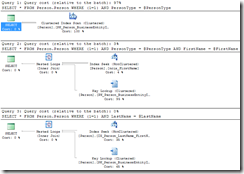I’ve done five SQL Server Microsoft Certification exams in the past few years, passing each on the first try, and only using an Exam Preparation book for the first exam. I believe there are two methods of studying for an exam – either cramming and hoping you retain enough knowledge during the exam, or creating a targeted list of topics, and living and breathing the subject until you know it intimately.
This article will talk about the second method, which I believe results in a much deeper understanding of the exam contents.
Daily Practice
Use SQL Server daily. This is the most important step. If you are wanting to take an exam on SQL Server, you should be using it daily (alright, you can have weekends off!). The point of this is to be continually using what you’ve been learning, reinforcing it, and completely internalising it. If you aren’t using SQL Server, why get certified in it?
I recommend spending 30-60 minutes each day using SQL Server in addition to your day job. Create a database in your development environment, and practice the techniques and commands you are learning, and then utilise them in production where appropriate (and approved). Even if you’re doing routine work and have no current need to use the new features that will be on the exam, you should still aim to practice each day. This study period can be at any time of the day – whatever works for you. I recommend either during lunch, or before starting work in the morning. Personally, evenings don’t work for me, as I’m less alert at the end of the day and can’t get started until 9:30pm due to family commitments.
If you don’t have the correct environment at work (for example, you’re studying for SQL Server 2008 certifications, but you only use 2000 at work), it may be harder to get the necessary practice. In this case, I recommend discussing the options with your boss. It’s in his interests to get you skilled in the latest version of SQL Server, due to the amount of technical debt growing with older versions of SQL Server. If this is not possible, buy your own copy of SQL Server 2008 Developer Edition, and install it on your own computer (it runs fine on a netbook – just ask Noel McKinney!)
What’s Going To Be Examined?
How do you know which topics will be on the exam? The title of the exam is often not a very good indicator, and goes into no detail, but the exact requirements of the exam are freely available on the Microsoft Learning web site. For example, scan through the list of requirements for the 70-433 exam, available on the “Skills Measured†tab.
You’ll see that there are seven major sections, with four or five dot-points against each. This tells you exactly which topics may be included, and as long as you have a good handle on each of these, you’re good to go!
I like to make a copy of this list, and cut out the topics that I already know well, leaving behind a list of subjects that I believe I need to work on. I then take one of these subjects, and throw myself into learning the topic.
This can be from:
- reading Books Online
- searching for online articles or blog posts on the topic
- using one of the Exam Preparation guides
- watching videos (e.g. from www.sqlshare.com)
Reproduce to Reinforce
When reading material with examples, reproduce each example in your own environment. Type out the code each time, run it, and check that it works.
After a period of time (an hour, a day), reproduce the example without looking at the original code. If you get stuck, use Books Online for syntax assistance.
This method of following the examples has two effects. Firstly, you are more likely to retain the syntax if you’re actively typing it, rather than passively copying and pasting. Secondly, by reproducing the example with minimal assistance, you’re proving to yourself that you now know the material.
Apply Your Knowledge
Finally, consider the pearls of wisdom that you’re learning, and see if you can apply it back to your own situation at work. If you’re learning about mirroring, and you currently have a cluster at work, consider the benefits of your current cluster, and contrast these with the benefits of switching to mirroring. You don’t actually have to change to a mirror, but consider how things would be different if you did. How does your DR plan change?
If you’re studying performance, and you don’t have a performance baseline for your servers, look into setting one up, and start to monitor performance more closely.
If you have a colleague available (preferably one that already knows this material) take them out for coffee and take them through your reasoning. The act of explaining your thoughts will solidify the concepts in your head, and they can suggest things you might have missed.
If no colleagues are available, you can throw your ideas to the Internet. Find a SQL Server forum, search for related threads, and if none are found, start your own. Or, utilise the #sqlhelp tag on Twitter.
Rinse and Repeat
Once you’ve completed the above steps for a specific topic, go back and choose another topic. Once you’ve worked your way through the list, you should be ready for the exam. Good luck, and if these tips are helpful, please let me know!













